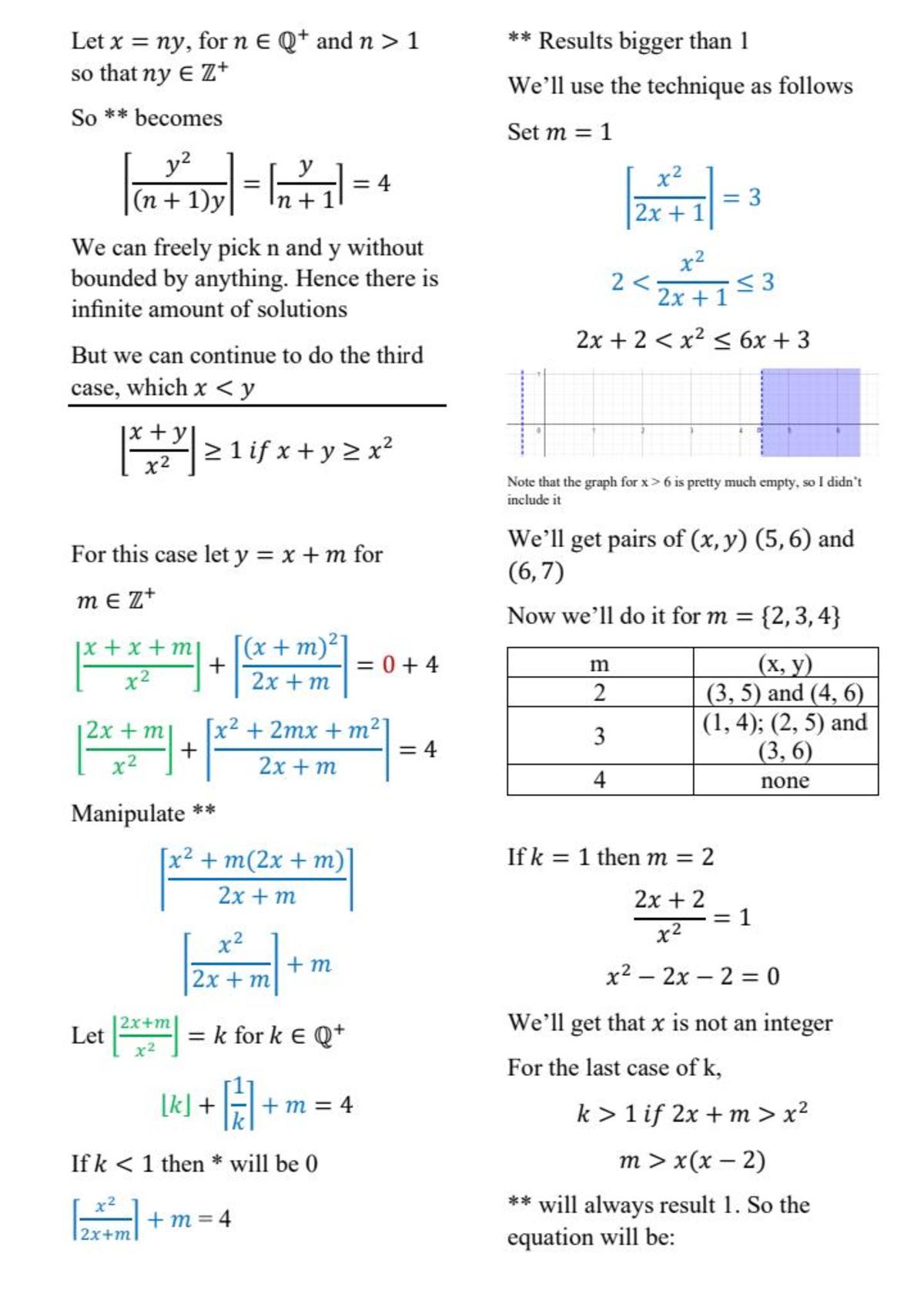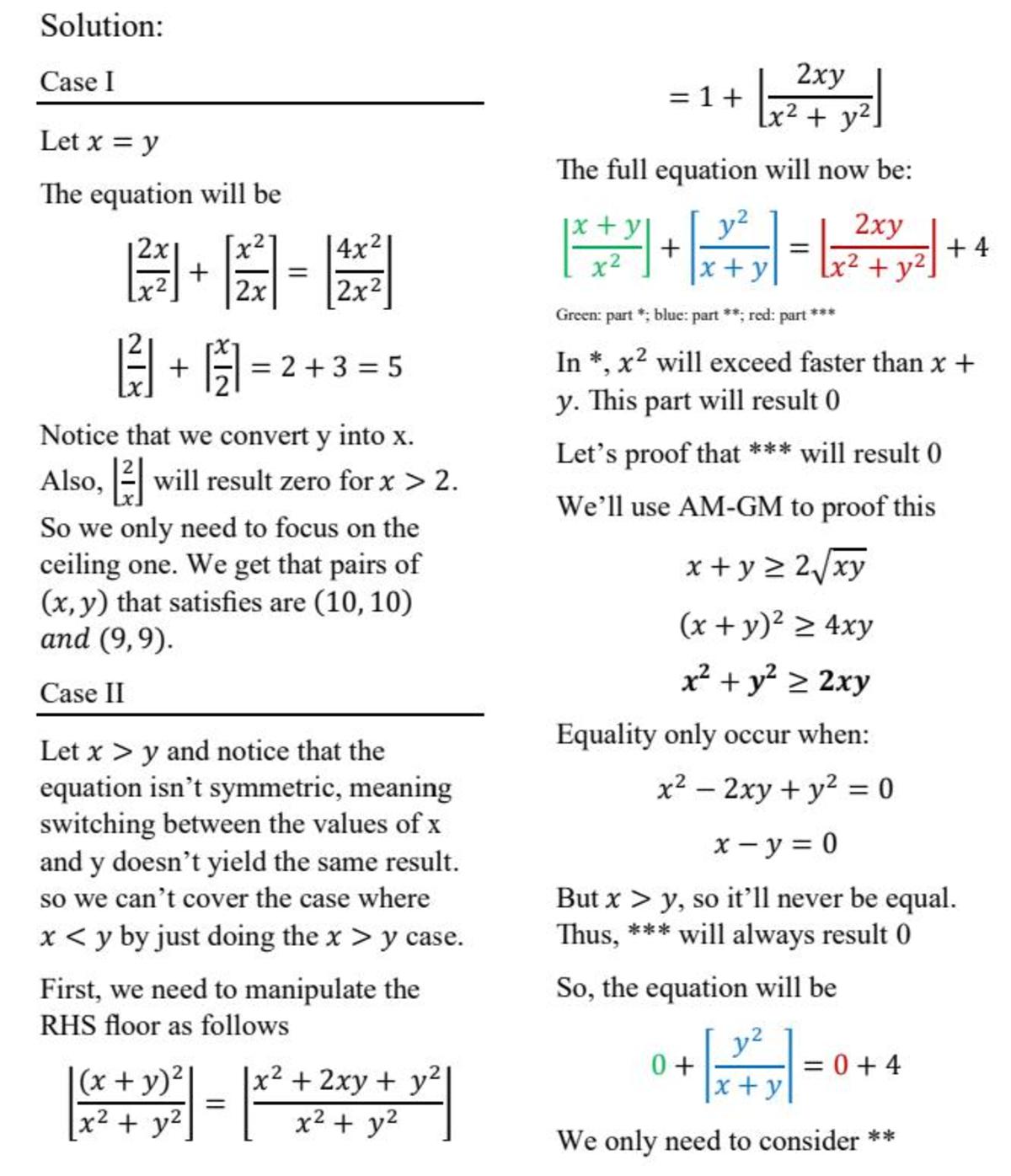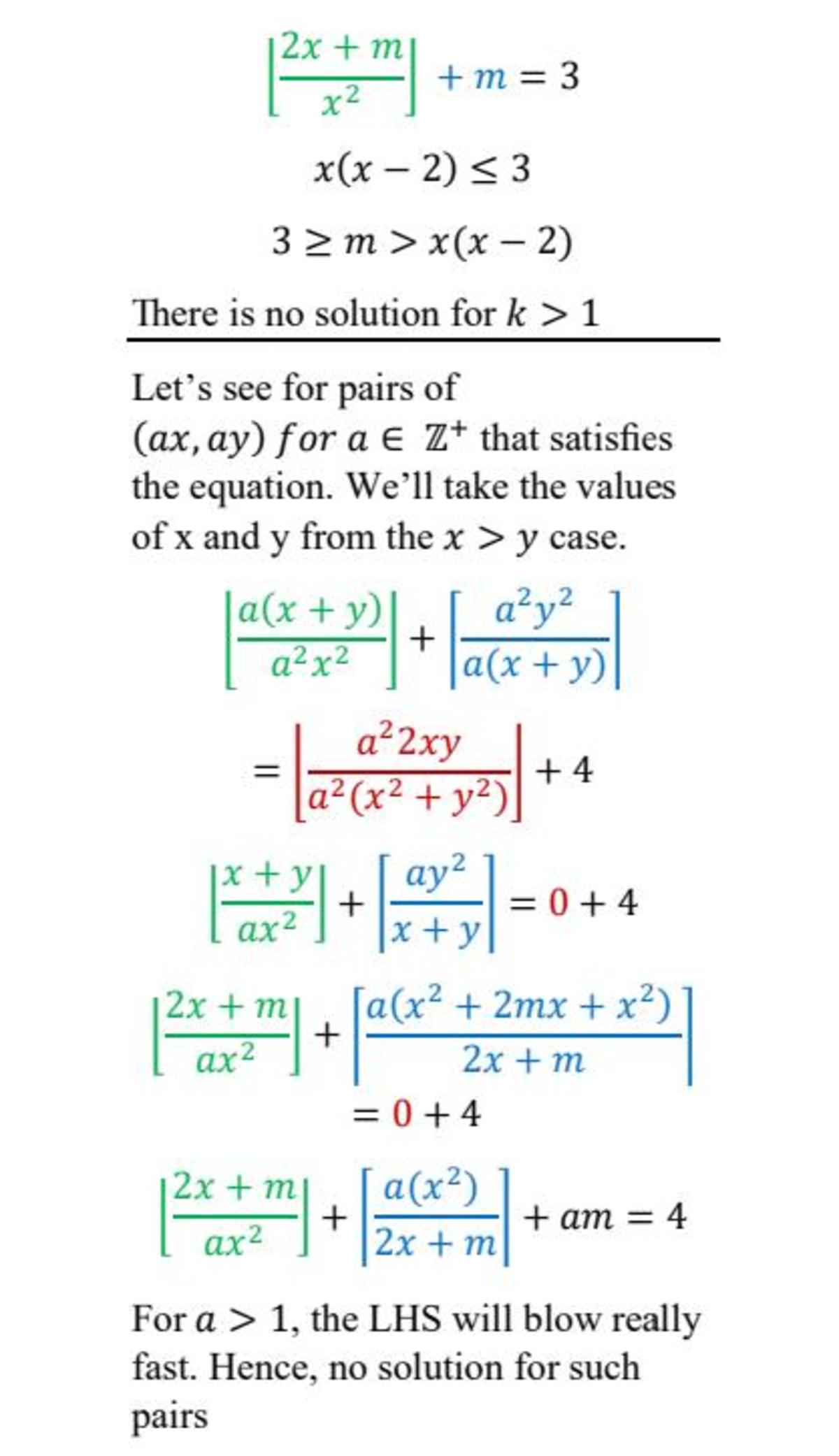Interesting Ceiling and Floors
Find the number of pairs of positive integers ( x , y ) satisfying
⌊ x 2 x + y ⌋ + ⌈ x + y y 2 ⌉ = ⌊ x 2 + y 2 ( x + y ) 2 ⌋ + 3 .
This section requires Javascript.
You are seeing this because something didn't load right. We suggest you, (a) try
refreshing the page, (b) enabling javascript if it is disabled on your browser and,
finally, (c)
loading the
non-javascript version of this page
. We're sorry about the hassle.
4 solutions
x → ∞ , y = int ( 2 x ) also works. First term is 0, second is 4 and right side is 4 for x = y as others have explained.




The text below the graph just reads that for x>6 is empty, so I didn't include it. Let me know if You have some suggestions and constructive criticism. I'm open, Thanks :D
The right hand side expression can be written as ⌊ x 2 + y 2 2 x y ⌋ + 4 .
Because ( x − y ) 2 ≥ 0 we see that x 2 + y 2 ≥ 2 x y , and the floor evaluates to 1 when x=y and vanishes otherwise.
Sidenote: for x = y the equation becomes ⌊ x 2 ⌋ + ⌈ 2 x ⌉ = 5 with solutions ( x , y ) ∈ { ( 9 , 9 ) ( 1 0 , 1 0 ) } .
Now Suppose x = y
we want to solve ⌊ x 2 x + y ⌋ + ⌈ x + y y 2 ⌉ = 4
To keep the 2nd term ⌈ x + y y 2 ⌉ from getting larger than 4 we need x ≥ 4 1 y 2 − y
Choosing y > 8 implies that x > y and the first term ⌊ x 2 x + y ⌋ vanishes. The only remaining condition is 3 < x + y y 2 ≤ 4 or 4 y 2 − y ≤ x < 3 y 2 − y
The size of the interval is 1 2 y 2 . So to any y > 8 we can find at least 5 values of x.
Let x = 4 k ( k + 1 ) and y = 4 ( k + 1 ) for k > 1 . Then x + y = 4 ( k + 1 ) 2 and:
⌊ x 2 x + y ⌋ = ⌊ 1 6 k 2 ( k + 1 ) 2 4 ( k + 1 ) 2 ⌋ = ⌊ 4 k 2 1 ⌋ = 0
⌈ x + y y 2 ⌉ = ⌈ 4 ( k + 1 ) 2 1 6 ( k + 1 ) 2 ⌉ = 4
⌊ x 2 + y 2 ( x + y ) 2 ⌋ = ⌊ 1 6 k 2 ( k + 1 ) 2 + 1 6 ( k + 1 ) 2 1 6 ( k + 1 ) 4 ⌋ = ⌊ k 2 + 1 ( k + 1 ) 2 ⌋ = ⌊ k 2 + 1 k 2 + 2 k + 1 ⌋ = ⌊ 1 + k 2 + 1 2 k ⌋ = 1
Therefore, for any k > 1 ,
⌊ x 2 x + y ⌋ + ⌈ x + y y 2 ⌉ = ⌊ x 2 + y 2 ( x + y ) 2 ⌋ + 3 ⟹ 0 + 4 = 1 + 3
which is a true statement, so there are infinitely many solutions .